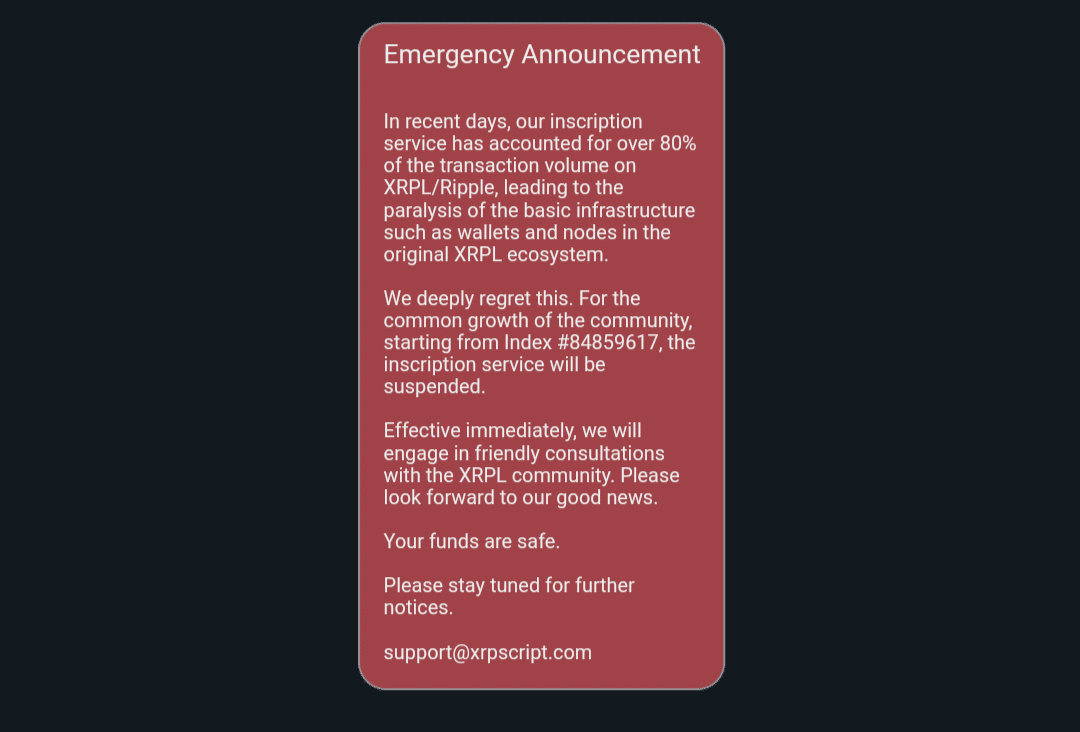The XRP Ledger (XRPL) has reportedly been experiencing a significant strain on its network since December 26, 2023, primarily due to a surge in transaction volume. Magnetic X, a leading decentralized exchange (DEX) project on the XRPL, disclosed through social media that the ledger is under what appears to be a distributed denial of service (DDoS) attack. The modus operandi involves hundreds of accounts sending minuscule transactions (0.000001 XRP) to a particular wallet, identified as fraudulent by blockchain explorer services like XRPScap and Bithomp. With the address rxRpSNb1VktvzBz8JF2oJC6qaww6RZ7Lw, this wallet has become a focal point in this incident.
While revealing these details, Magnetic X raised concerns over the potential impacts on regular users and development teams. As a prominent player in the XRPL ecosystem, it reported that the onslaught had hindered its applications from retrieving transaction history and keeping up with network transaction updates. This situation emerged as network nodes, overwhelmed by the volume, slowed down significantly. In response, Magnetic X has been optimizing its code, adjusting node configurations, and procuring additional resources to mitigate the impact.
Debate over the nature of the network activity
There is a split opinion regarding the nature of the heightened activity on the XRPL. Mayukha Vadari, a senior software engineer at RippleX, suggested that the situation might not be a deliberate attack but a spike in activity due to inscription-focused transactions. This viewpoint was echoed by other community members, including X user Guust Flater, who pointed out that such transaction increases are part and parcel of the open-source nature of the XRP Ledger. Flater also emphasized that the XRPL should be robust enough to handle these spikes in activity, suggesting that if individuals or entities want to stress-test the network, it should be within their rights.
This debate raises critical questions about the XRPL’s capacity to handle large volumes of transactions. Despite claims of a 1500 transactions per second (TPS) capability, the network is currently struggling with 60-70 TPS. This discrepancy has raised concerns about the platform’s scalability and the resilience of public nodes, especially those with limited capacity.
Implications for the future of XRP Ledger
The ongoing situation with XRPL serves as a critical moment of reflection for the blockchain community. The event underscores the importance of scalable and resilient network infrastructures capable of handling unexpected surges in activity. For XRP Ledger, this is a pivotal point that could define its ability to support high-volume, real-time transaction processing, which is crucial for its ambition to be a leading player in the blockchain space.
Furthermore, the incident highlights the need for continuous improvements and adaptations in blockchain technology to meet the evolving demands and potential threats. As blockchain platforms like XRP Ledger become increasingly integral to various financial and technological ecosystems, their ability to withstand and adapt to such challenges becomes paramount.
While the XRPL faces a challenging period, the response from the community and stakeholders like Magnetic X indicates a robust effort to address the issues at hand. The resolution of this situation and its lessons will likely play a significant role in shaping the future of the XRP Ledger and similar blockchain platforms.





